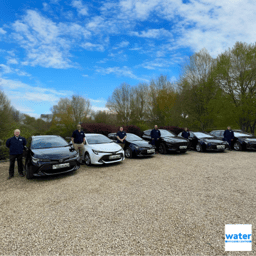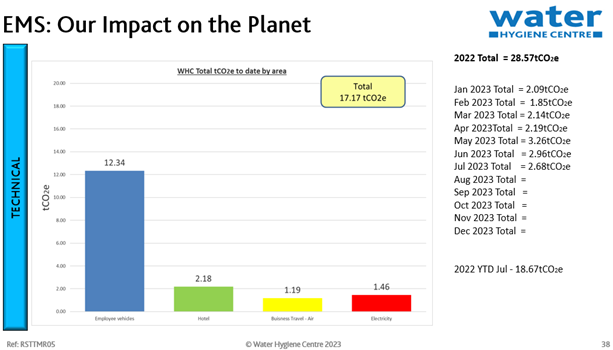The environment is something we should all be concerned about. It’s not just about the trees and the air, it’s about the future survival of our planet, there is no ‘Planet B’. That means making significant changes in the way we conduct our lives and go about our day-to-day living.
Climate change refers to a broad range of environmental degradation as a result of increasing levels of atmospheric CO2. The main component of climate change is global warming which is largely attributed to human activity like the burning of fossil fuels (i.e. earth's limited natural resources gas, oil and coal).
Another main contributor is emissions of greenhouse gases like CO2 which as a business the Water Hygiene Centre monitor how much we contribute and understand how we can reduce our CO2.
The Water Hygiene Centre: What we have learned
To understand what the current Carbon Footprint is for the Water Hygiene Centre, we needed to learn what it was that we could monitor, how to obtain that information, and then establish baseline data, so we could look to improve.
Our learning is from the Greenhouse Gas Protocol, which defines two scopes:
 Scope 1 - direct emissions from the business or under their control, such as fuel usage from manufacturing, gas boilers, fleet vehicles and air-conditioning leaks.
Scope 1 - direct emissions from the business or under their control, such as fuel usage from manufacturing, gas boilers, fleet vehicles and air-conditioning leaks.- Scope 2 - indirect emissions from your energy supplier, so switching may save approx. 25% of your carbon footprint straight away.
In 2022 we started to establish our baseline ‘damage data’, we focused on the four main areas of scopes 1 & 2, being:
- Vehicle emissions
- Business travel
- Hotel stays
- Office electricity
We were able to collect data monthly and using Government supplied Greenhouse Gas reporting conversion factors we were able to convert this to a tCO2e.
How could we improve our Carbon Footprint?
This data was shared at our monthly Team Meeting, where we sought feedback from the team on how we could reduce our output, one of the ideas being changing company vehicles to Hybrid and electric.
At the end of 2022, with all our Carbon footprint data collated we started thinking about how we could offset our operational carbon emissions to commit to becoming carbon neutral for that year. This is where our journey with Beyond Procurement began…
The first part of the journey was to commit to becoming carbon net zero. With all of our energy usage and carbon footprint data, we worked with Beyond Procurement to create a net zero pathway and strategy that looked at carbon reduction actions and how we could refine our activities for future reductions.
Our Solution and Outcome
Although 2022 was over, with our Carbon Footprint data to hand we asked Beyond Procurement if we can do anything with this and make immediate improvements… They came up with several initiatives on how we could offset our final tCO2e for that year.
 There were several options for verified carbon reduction projects and finally, we settled on a project planting trees in the southeast of the UK. Something local to our area and within the UK.
There were several options for verified carbon reduction projects and finally, we settled on a project planting trees in the southeast of the UK. Something local to our area and within the UK.
We are proud to say that for 2022 as a business the Water Hygiene Centre was certified as Carbon Neutral. Our journey continues to implement further environmental strategies such as ride-sharing, use of public transport and LED lighting in the office.
To date with the implementation of our changes, the business produces 1.5tCO2e less for 2023 than the same point in 2022.

Climate change is a reality we all must face. it will continue to have a profound impact on all life on Earth. We need to act now if we want to leave a liveable planet for future generations.
Read more and visit our Environmental and Social Responsibility page.
Feel free to reach out if you have any questions about the issues mentioned above or if you would like to consult with one of our experts on water hygiene.
Editors Note: The information provided in this blog is correct at the date of original publication – October 2023
© Water Hygiene Centre 2023









